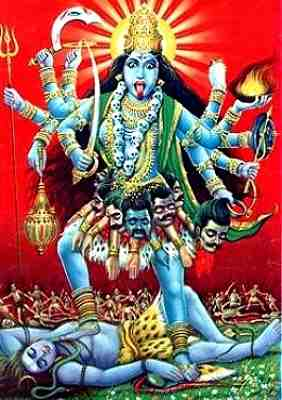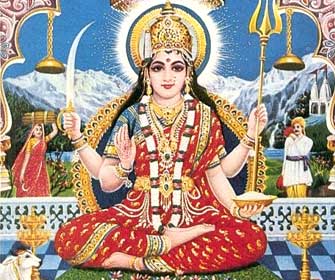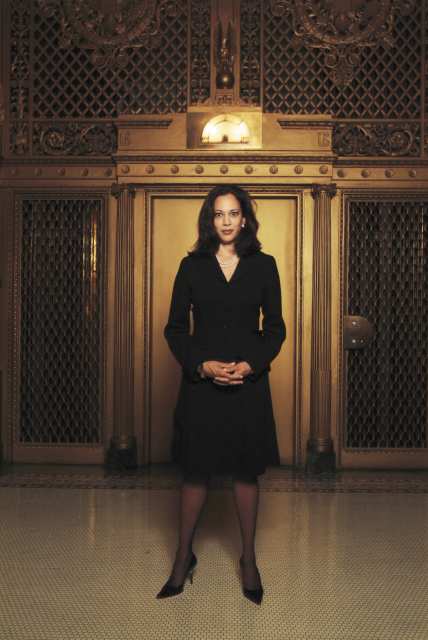Recently, a former professor of mine invited me to guest lecture in a series on the topic of feminism and how it influences various careers. While preparing for my talk, I realized that my idea of feminism -- and how it relates to my career -- is born of a particular story. The story grows out to intertwine with how I view the present world at large and the work of so many other women I admire. After some encouragement from several interested parties, this article is an online version of that talk. Hindu goddesses, women in public office, Occupy Wall Street and disruptive technology, here we go!
When I'm making decisions about my life and career, I often think about a favorite Hindu story. I can't do justice to the full richness of the story in this piece -- but the center message surrounds two Hindu goddesses, Kali and Parvati.
Kali has become somewhat of a recognizable image in popular culture, and is known for being a warrior goddess. The goddess of destruction. Fierce and strong and willing to take on any necessary battle.

Parvati, on the other hand, serves in part as the goddess representation of compassion and warmth. The wife of Shiva. The mother of Ganesh. She is beauty and peace and calm and the creation of new.

The catch, though, is that the stories of these goddesses show them both as different entities, and yet one and the same. Kali and Parvati are said not to be opposites, but rather to be the same energy, shared in different forms.
This story was first told to me around the time that I was contemplating my career next steps, shortly before I completed my graduate studies. The lesson was meant to call out the concept of false choices, and to see beyond them. That it was not oppositional for a woman to be strong and fierce and to attack what is bad and to also be a creative force of beauty and new realities. I could be both, I was meant to understand. More than that, it was a part of my responsibility to embody both if I hoped to make effective change in this wild, tumultuous world in which former structures are crumbling and new ways forward are needed.
I often keep images of Kali and Paravti hanging near whatever desk I work at. I call upon that wisdom in my work in media and politics. There is a need to call out and expose that which is wrong in the world, and to fight to take away its power. And then there is also a need to find beauty in new stories and images, and to present an alternative way that we can move forward as a better society.
This story has been with me for years, but while preparing for my recent lecture, I realized that it had only increased in relevancy. The Occupy Wall Street movement is a key example. It is both a fight against the structures that have done 99 % of us wrong, and is also wrestling with how to orchestrate their own movement in a way that models a better alternative.
I don't argue that it is a gendered base skill to both destroy and create anew; but I do think the feminism that I believe in specifically requires that mixture. It's not enough merely to tear down what is wrong -- the forces most necessary today have to then present a new and better alternative, beyond what has been considered before. It is, in my opinion, a feminist act to do both -- and it's a form of feminism that can be willingly employed by anyone of any gender who sees the value in its power.
I'll give you another example of how this balance between destruction and creation can take specific form: Elizabeth Warren. Warren, who is now running for Senate in Massachusetts, is a grandmother and law professor who also says things like, "My first choice is a strong consumer agency. My second choice is no agency at all and plenty of blood and teeth left on the floor."

Elizabeth Warren saw that the financial structures in American were not serving anyone other than the very rich. And she saw that a fight was necessary to change how the system had been rigged. She took on that fight, and won in the form of creating the Consumer Financial Protection Bureau. But what is key is that she can also speak clearly about the new way things should look, and she works to make those new ways reality. How, for example, massively long and deceptive credit card contracts should be required to be simple, short and clear about their terms. She presents a vision of a better way for things to work, and that vision includes a lot of compassion for working people -- and yet she's willing to fight fiercely to make that change happen.
Another example can be seen in the Attorney General of the State of California, Kamala Harris. Attorney General Harris ran on a platform of being, "Smart on Crime." She explained, in her book by the same name, and on the campaign trail, that for too long we've believed in a false choice: That one has to be either soft or hard on crime.
In reality, what our justice system needs is an honest evaluation of what works. What is the best way to keep our communities safe? If we can't afford our prisons and jails and if high rates of those who leave incarceration are likely to commit another crime and circle back in, we need to question what isn't working.

Attorney General Harris argues that we need to protect people by, yes, locking up those who cause serious harm. But we also need to look at how to alter the way things work. We need to learn that children who don't regularly attend school are more likely to become incarcerated adults and we need to figure out what we can do to stop that cycle. We need to examine what can be done to help those leaving the justice system to reenter society as productive citizens who have jobs and can care for their families, which makes them less likely to commit a repeat offense. This approach is new, it is smart, it protects communities and it also saves money.
Attorney General Harris' work on justice regularly embodies the themes of both altering prior structures that do not work and creating better alternatives that serve us all. The outcome turns out to be innovative approaches and better outcomes.
This trend goes beyond individuals and movements shaking up our public space. A similar concept has led to new terms that describe various other inventions and trends. "Disruptive technology" or "disruptive innovation" are two of my new favorite terms. They go to the heart of the Kali/Parvati balance I love so much. Whereas the word disruptive might generally be assumed as a negative, here it means something else.
The definition of disruptive innovation:
An innovation that creates a new market by applying a different set of values, which ultimately (and unexpectedly) overtakes an existing market.
Essentially a new and better way of acting that emerges unexpectedly and shatters the old ways of doing things. The term "disruptive" is needed to explain the power of the innovation that follows it. It not only innovates, it simultaneously removes the outdated structure that no longer served a purpose.
It doesn't matter whether we're talking about technology, political structures, ways of protest, ways we share power and wealth in our society or how we improve upon family structures, education or gender dynamics. What is no longer useful must be dismantled, and the most powerfully able to do so are those who also present and create new and better ways of moving forward.
Whether you think of this practice in terms of feminism, Hindu goddesses or in tech terminology, it is a necessary practice to think about as we all approach our work. Fierce destruction and compassionate creation are two sides of the same energy; both needed. An energy that these times demand now more than ever.